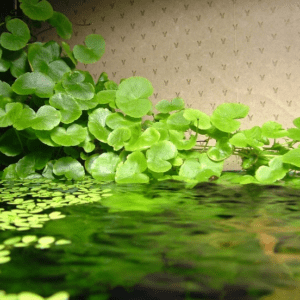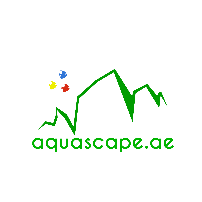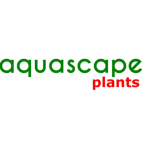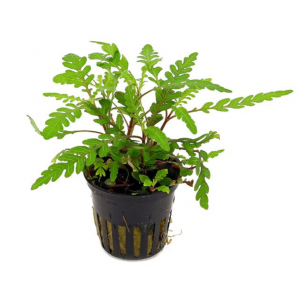Riccardia sp. “chamedryfolia” Coral moss
- Forms compact yet delicate cushions
- Attaches itself to the hardscape
- Very popular in aquascaping
| Genus | Riccardia |
| Difficulty | easy |
| Usage | Epiphyte (growing on hardscape), Nano tanks |
| Growth | slow |
| pH value | 5 – 7 |
| Temperature tolerance | 18 – 28°C |
| Carbonate hardness | 0 – 14°dKH |
| General hardness | 0 – 30°dGH |
| Propagation | Splitting, cutting off daughter plants |
| Can grow emersed? | yes |
د.إ41.65 د.إ49.00
Related products
-
Live Plants & Neutrients, Plants, Potted
Cabomba aquatica
0 out of 5(0)Cabomba aquatica
- Gorgeous stem plant from South America
- Light green, filigree leaves
- Especially suited to larger aquariums
The Cabomba aquatica is a gorgeous fine-leafed stem plant from tropical South America. This aquatic plant comes from sunny, fast flowing to calm, acid, very soft waters. There are different forms of this species, e.g. the reddish “Cabomba schwartzii”, however the customary form has light green leaves. The stems of Cabomba aquatica may get more than one meter long and have pairs of up to 9 cm wide, fan-shaped submerged leaves with fine segments. When the shoots reach the water surface, shield-shaped floating leaves and yellow flowers may appear.
In contrast to the winter-hardy Carolina fanwort Cabomba caroliniana, an invasive species in Europe, the tropical Cabomba aquatica is still allowed to be traded in the European Union. For all kinds of aquarium plants, it must be ensured that they do not enter waters and sewage systems. Dispose aquarium plants via the household waste only.Cabomba aquatica is a demanding aquarium plant. Strong lighting, soft, flowing water and CO2 addition are important, as well as macro and micronutrient supply on a regular basis. The optimum temperature range lies between 23 and 27 °C. As well as other stem plants, The Giant Cabomba can be propagated by cuttings, it also develops new shoots at the basis of older stems.
This Cabomba looks best in larger, at least 50 cm high tanks, as a group or larger stand in the background to midground. Its light green, filigree foliage contrasts with darker or red, more coarsely textured plants. In open tanks, also its floating leaves and small yellow flowers offer an interesting sight; they may develop when the stems are allowed to grow along the surface.
Cabomba aquatica is a highly variable fanwort originating from the northern and central parts of South America. There are various colour varieties, the most frequently found in trade form of which is a green plant named giant Cambomba.
C. aquatica has up to 8.5 cm long and 9.5 cm wide submersed leaves parted into a great many fine tips. When the sprouts reach the water surface, on its tip widely oval to roundish, shield-shaped floating leaves may form, as well as yellow, mostly two-fold flowersSKU: n/a -
Plants, Plant Fertilizers
EASYLIFE 25 ROOT STICKS
0 out of 5(0)Optimal root feeding
The Easy-Life 25 Root Sticks are ideal to feed plants directly at the roots. The product contains 25 pieces of special clay sticks that are very nutritious and have a high iron content. Due to the special pre-treatment of these sticks, they do not fall apart immediately upon contact with water. The release of nutrients goes very gradually over a period of several weeks. The water will not get cloudy at all, so algae cannot take advantage of that. The product is very easy to use and causes no additional water pollution.
Use these root sticks for plants with a strong need for root nutrition such as Cryptocoryne, Echinodorus or Lotus. If the soil layer is very narrow or the plant roots are small, the sticks can be very easily broken into smaller pieces. The root sticks can therefore be used in all cases.
SKU: PS0025 -
Sold out!Plants, Potted
Aquascapeplants Hygrophila pinnatifida
0 out of 5(0)Size: Pot
Maharashtra, Goa, Karnataka, Tamil Nadu are the states in India where Hygrophila pinnatifida is commonly found. However in the books its origin is from North India state of India, Uttar Pradesh.
- Artistic leave pattern
- To artistic to be believed real
- Can be planted in soil or attached to the hardscape
- Relatively easy to grow and care
Synonyms Nomaphila pinnatifida Dalzell, Cardanthera pinnatifida (Dalzell) Benth. ex C.B.Clarke . Complete botanical name Hygróphila pinnatífida (Dalzell) Sreem. Family Acanthaceae Genus Hygrophila Difficulty medium Usage Epiphyte (growing on hardscape), Semi-emersed plant for open tanks, Midground, Foreground, group Height 5 – 40cm Width 10 – 30cm Growth medium SKU: n/a -
Live Plants & Neutrients, Plants for terrarium, Plants, Potted
Hydrocotyle leucocephala Brazilian Pennywort
-15% Live Plants & Neutrients, Plants for terrarium, Plants, Potted
Live Plants & Neutrients, Plants for terrarium, Plants, PottedHydrocotyle leucocephala Brazilian Pennywort
0 out of 5(0)Hydrocotyle leucocephala, commonly known as Brazilian Pennywort, is a versatile and attractive aquatic plant. Here’s a detailed profile:
Hydrocotyle leucocephala Overview
Common Name: Brazilian Pennywort Scientific Name: Hydrocotyle leucocephala Family: Apiaceae Origin: Central and South America
Care Requirements
Lighting: Medium to high intensity CO2: Beneficial but not essential Water Parameters:
- pH: 5.0 to 9.0
- Hardness: Very soft to very hard water
- Temperature: 22 to 28 °C (72 to 82 °F)
SKU: n/a






